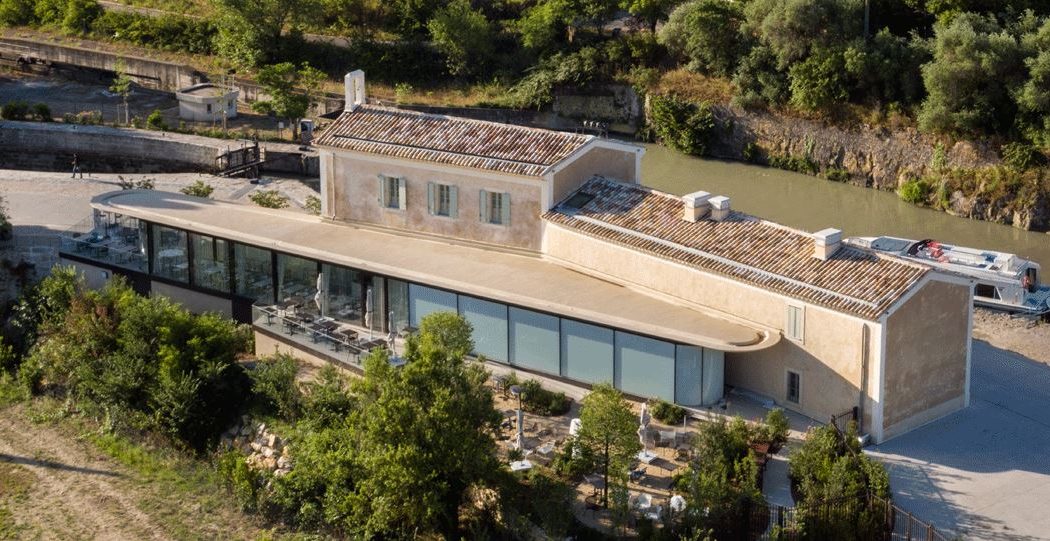How does one repurpose, renew, and reconnect a set of 17th Century canal locks to create economic revitalization within the historic preservation constraints of a UNESCO World Heritage Site? Two firms, ALEP Landscape and INCA Architectes show us how to do it in France.
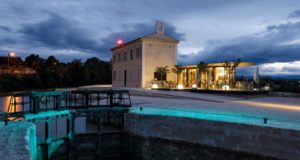 The nine locks of Fonséranes, designed in the 17th century by Pierre-Paul Riquet, are listed as historical monuments and certified as a UNESCO World Heritage Site. Sobriety and discretion have prevailed on the architects, whose job it was to re-think the layout of the structures in close proximity to the historic locks.
The nine locks of Fonséranes, designed in the 17th century by Pierre-Paul Riquet, are listed as historical monuments and certified as a UNESCO World Heritage Site. Sobriety and discretion have prevailed on the architects, whose job it was to re-think the layout of the structures in close proximity to the historic locks.
To recover the spirit of traditional Fonséranes stopping place for travelers, the restoration of the existing buildings respects the simplicity of canal’s engineering and architecture. The external historical monuments have been carefully restored, and the new internal layouts are both functionally and aesthetically appropriate.
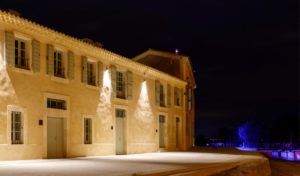 To avoid impinging visually on historic monument, this contemporary expansion slides north, behind the former inn. A fine strip of concrete roofing, supported by a metal structure, shows on the surface of the inn and underlines its own identity.
To avoid impinging visually on historic monument, this contemporary expansion slides north, behind the former inn. A fine strip of concrete roofing, supported by a metal structure, shows on the surface of the inn and underlines its own identity.
This expansion articulates a southern patio, linking line of sight to the locks. A shady garden on the north side is bathed in quietude and coolness. The various atmospheric elements thus welcome the public with amenable conditions, whatever the season.
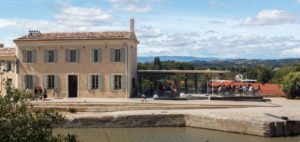 The contemporary expansion houses a restaurant, easily reachable from the tourism office but also directly from the outside, from the South patio, for an autonomous functioning especially in the evening. The restaurant room is largely glassed and offers a clear view towards the city of Béziers.
The contemporary expansion houses a restaurant, easily reachable from the tourism office but also directly from the outside, from the South patio, for an autonomous functioning especially in the evening. The restaurant room is largely glassed and offers a clear view towards the city of Béziers.
The project is designed as an expansion of the historical tow barge house. The general architectural aim is to create the image of a light pavilion – and not a building – which assures a clear dialectics with the massive and mineral architecture of the existing historical building. Hence the new expansion is treated in an immaterial and transparent way.
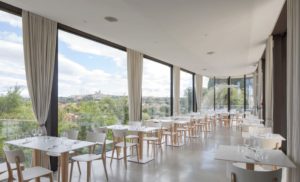 The restaurant space is combined, designed in a smooth way, without any shackle or partition. The glassed and continuous frontage, which is transparent for public spaces (bar and restaurant) and translucent for technical spaces (kitchen and storage).
The restaurant space is combined, designed in a smooth way, without any shackle or partition. The glassed and continuous frontage, which is transparent for public spaces (bar and restaurant) and translucent for technical spaces (kitchen and storage).
The design of the pavilion enables a very efficient dual-aspect ventilation between the two North and South frontages.
All told, a lovely and healthful blending of heritage, nature, and business.

